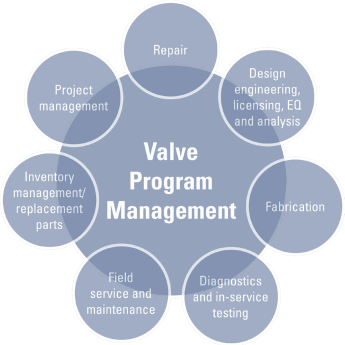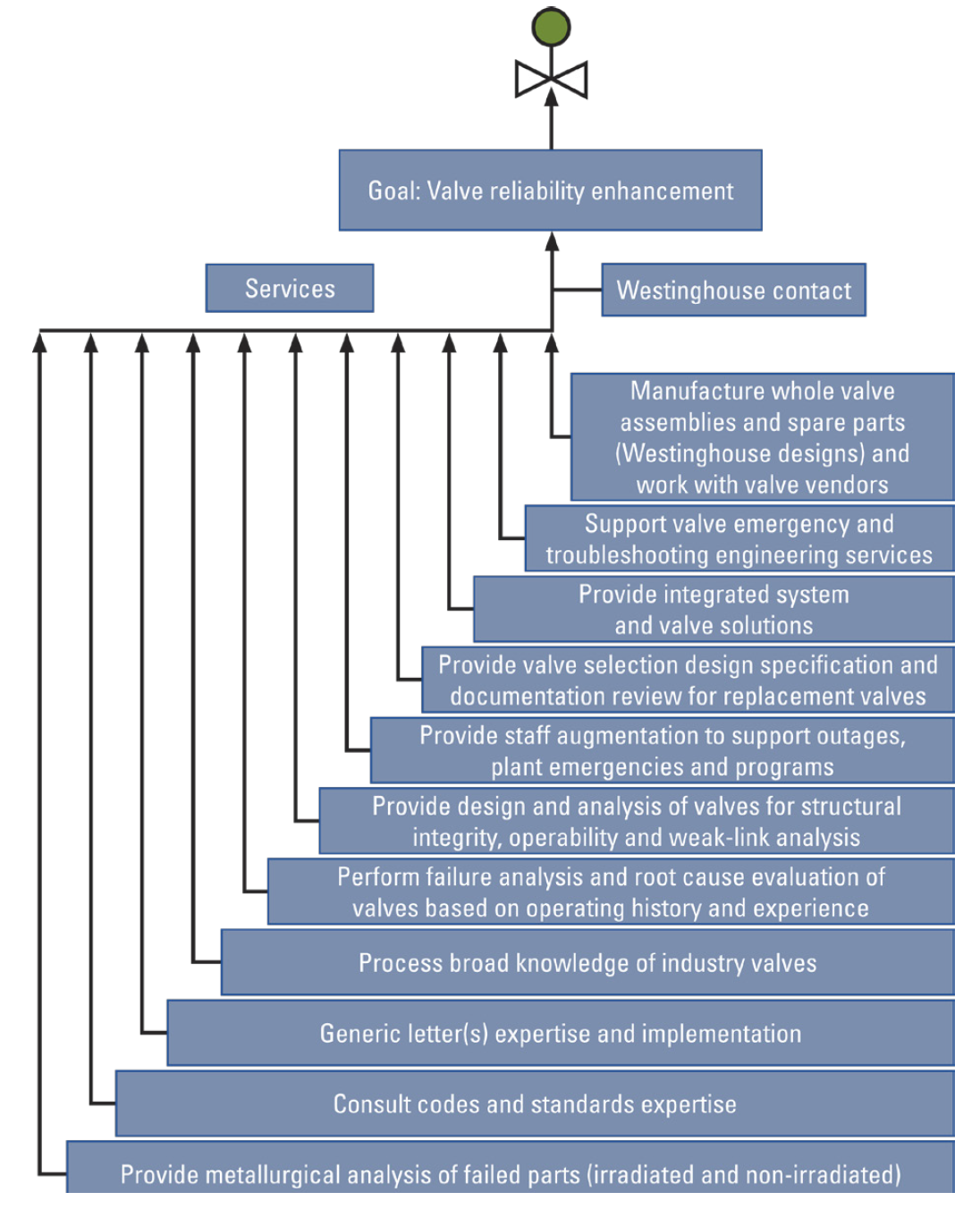The goal of Valve Program Management (VPM) is to maintain the safety-related and important-to-safety-related valves’ reliability so that they can perform the design basis requirements for the life of the plant. While this may be simply stated, the actual management and implementation of the program is a complex and comprehensive task that, if performed effectively, results in increases in both plant reliability and capacity factors. The VPM initiative, an effort to achieve improved plant performance, comprises the following components:

Westinghouse’s vast technological base and its capability to support a plant’s valve issues are key in implementing the program. Westinghouse also has relationships with third-party vendors that will provide other necessary services. First, the customer contacts Westinghouse to engage his or her assigned Westinghouse representative. Once the Westinghouse contact has been notified, Westinghouse will marshal the resources to support the customer’s request. For any selected service, Westinghouse can tailor the program to meet the customer’s needs and utilize existing programs to deliver quality and cost-effective products and services.
The programmatic components of a detailed VPM initiative are shown in this graphical view:

Graphical view of a subset of Westinghouse capabilities to support a VPM initiative
Westinghouse can leverage its engineering capabilities, its field service know-how and its technology to provide integrated VPM support through valve reliability.
Westinghouse provides life cycle management for these valves through:

Westinghouse gate valve
Westinghouse has helped a number of its customers with programs to manage their valves by providing engineering, spare parts and repairs at their plant sites. Some of Westinghouse’s experiences include: